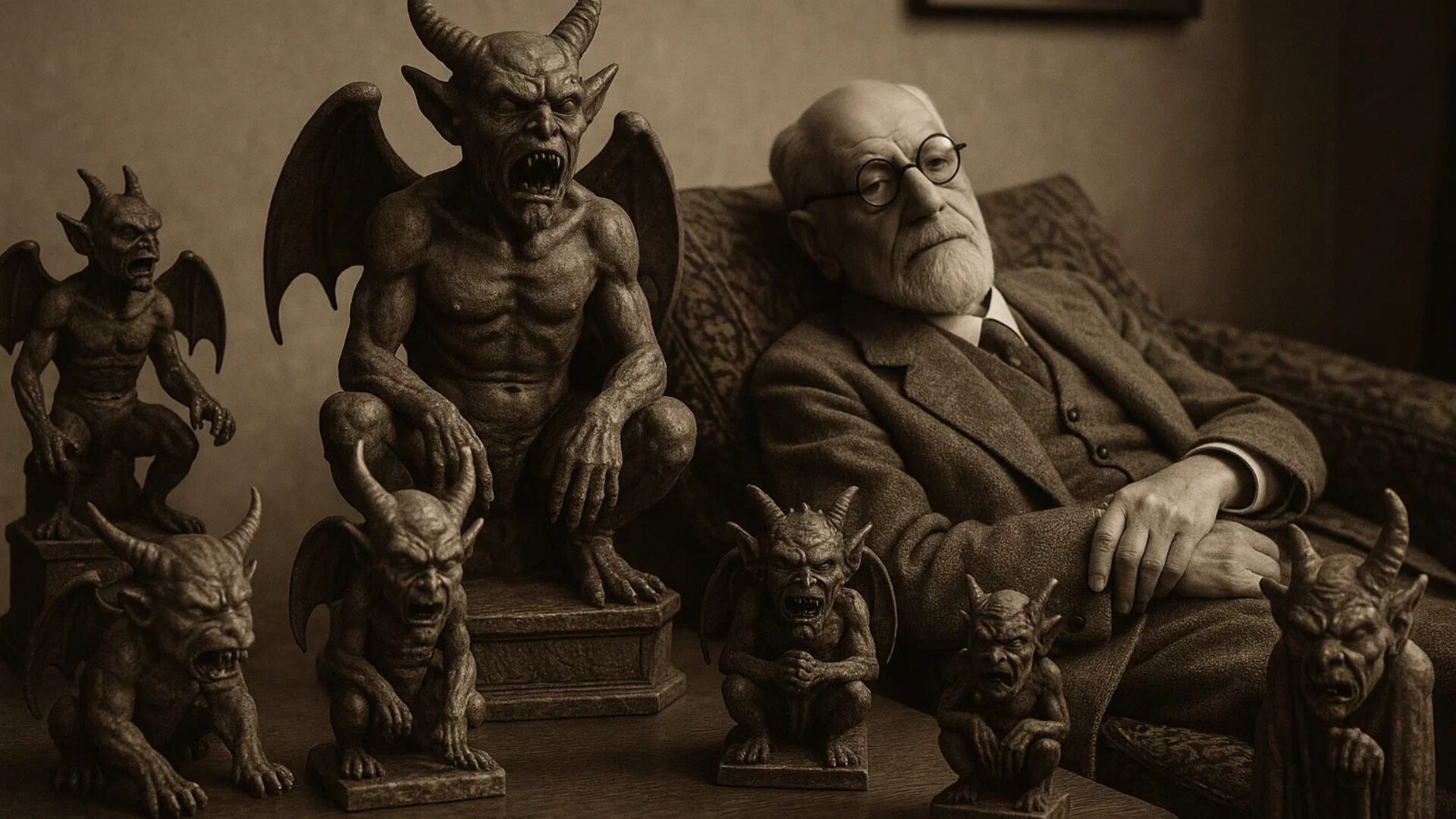Sigmund Freud: The Man Who Dreamed the Mind Into Being
Few names carry as much weight—and as much controversy—as Sigmund Freud, the Austrian neurologist who became the father of psychoanalysis. Freud didn’t just influence psychology; he rewrote the way we think about the human mind, dreams, childhood, sex, and even ourselves.
Though his theories have been debated, reworked, and even discarded, Freud’s impact on Western thought is unparalleled. He brought the unconscious into focus, made therapy a cultural phenomenon, and turned inner life into a legitimate subject of scientific inquiry.
The Birth of the Talking Cure
Freud’s great innovation was not a drug or a medical device—but a conversation. He pioneered psychoanalysis, a method of treatment in which patients explored their unconscious thoughts and desires through free association, dream analysis, and interpretation.
The core idea? That unconscious conflicts, often rooted in childhood, shape our emotions, behavior, and even physical symptoms. Freud believed that by bringing these repressed ideas to consciousness, patients could gain insight and relief—what he called catharsis.
Freud’s methods were radical for his time:
-
Free association: Letting the patient speak without censorship to uncover hidden memories.
-
Dream interpretation: Dreams, he said, are the “royal road to the unconscious.”
-
Transference: The way patients project feelings for important people onto their therapist.
This method gave rise to the iconic image of a patient lying on a couch, speaking freely while the analyst listens quietly. Psychoanalysis wasn’t just therapy—it was a deep excavation of the soul.
Freud’s Theories: Sex, Dreams, and the Unconscious
Freud’s mind was a workshop of daring ideas. Some of the most influential (and controversial) include:
-
The Id, Ego, and Superego: His structural model of the psyche. The id demands pleasure, the superego imposes moral rules, and the ego negotiates between them.
-
Psychosexual stages: Freud theorized that personality develops through a series of stages—oral, anal, phallic, latent, and genital—each centered around pleasure zones.
-
Oedipus complex: A child’s unconscious sexual desire for the opposite-sex parent and jealousy toward the same-sex parent. Perhaps his most debated idea.
Freud didn’t just study the abnormal—he believed every human psyche was shaped by repressed desires, defense mechanisms, and unconscious drives.
The Id, Ego, and Superego: The Three-Part Psyche
Freud’s most enduring psychological model divides the human mind into three dynamic parts: the id, ego, and superego. The id is the primal, instinctual component of the mind—it seeks immediate gratification of desires, driven by the pleasure principle. It’s entirely unconscious and includes basic drives like hunger, sex, and aggression. The ego, on the other hand, operates according to the reality principle. It mediates between the id’s impulses, the external world, and the demands of the superego, using reason and logic to find socially acceptable ways to satisfy desires. The superego represents internalized moral standards, ideals, and societal rules—essentially our conscience. Together, these three entities constantly interact and clash, forming the basis of inner conflict and psychological tension.
Psychosexual Stages of Development
Freud proposed that human personality develops through a series of psychosexual stages, each focused on a specific erogenous zone of the body. These stages are: oral, anal, phallic, latency, and genital. In the oral stage (0–1 year), pleasure centers on the mouth—sucking and eating. If fixated, a person might develop habits like smoking or overeating. In the anal stage (1–3 years), the focus is on bowel and bladder control; strict toilet training might lead to an “anal-retentive” personality—orderly and stubborn. The phallic stage (3–6 years) introduces the child’s first awareness of sexual identity and attraction. This is followed by the latency stage (6–12 years), where sexual impulses are repressed, and the focus shifts to learning and social development. Finally, in the genital stage (from puberty onward), sexual urges reawaken in a mature, adult form. According to Freud, unresolved conflicts in any stage could result in lasting personality traits and neuroses.
The Oedipus Complex
One of Freud’s most controversial and widely debated ideas is the Oedipus complex, which occurs during the phallic stage of development. Named after the Greek mythological figure who unknowingly killed his father and married his mother, the theory suggests that young boys experience unconscious desires for their mother and view their father as a rival. This internal conflict generates anxiety and guilt, leading the child to repress these desires and ultimately identify with the same-sex parent. Freud believed that successful resolution of the Oedipus complex was crucial for the development of a healthy adult identity. He also proposed an analogous Electra complex for girls, though he admitted it was less clearly defined in his theory. Despite being contentious and often criticized in modern psychology, the Oedipus complex played a central role in Freud’s understanding of human motivation, guilt, and gender identity.
Freud’s spirits
Though Sigmund Freud is widely regarded as a pioneer of scientific psychology and a fierce advocate for rationalism, his relationship with the spiritual and the supernatural was more complex than it first appears. Publicly, Freud was a self-proclaimed atheist and a staunch materialist who dismissed religion as an illusion and referred to belief in God as a projection of the father figure—an emotional crutch for dealing with the uncertainties of life. In works like The Future of an Illusion (1927), he famously described religion as a collective neurosis, born from humanity’s infantile longing for protection and order. However, beneath this rigid rationalism lurked a deep fascination with what he called “the uncanny,” a concept he explored in his 1919 essay Das Unheimliche. Freud was intrigued by phenomena that disturbed the boundary between the familiar and the strange—ghosts, doubles, déjà vu, repressed memories surfacing as apparitions—all of which he interpreted psychologically rather than supernaturally. Interestingly, despite his public skepticism, Freud’s private letters and associations reveal a curious tension. He maintained friendships with individuals who were deeply invested in spiritualism, including Carl Jung, who explored esoteric and mystical themes. Freud also corresponded with writers and researchers studying occult phenomena, such as the paranormal researcher Wilhelm Fliess. At times, Freud even speculated on the idea that certain neuroses or hysterias could have been understood by earlier generations as demonic possession—though he would quickly reinterpret such experiences through the lens of repressed trauma or sexual conflict. For Freud, spirits and demons were not literal entities, but potent metaphors for the darker recesses of the unconscious mind. In fact, many of the “monsters” of classical religious or folkloric imagination—succubi, demons, ghosts—he believed could be seen as personifications of guilt, taboo desires, or unresolved Oedipal conflicts. Thus, while Freud rejected the metaphysical claims of religion and the supernatural, he never denied their psychological power. Instead, he saw them as projections of inner conflict, fragments of the self dressed up in mythological clothing. In a paradoxical way, Freud’s universe—though godless—was haunted all the same.
Freud’s Concept of Libido
Freud’s concept of libido stands at the core of his psychoanalytic theory, functioning not just as a term for sexual energy, but as the fundamental life force that drives all human behavior. Initially, Freud defined libido narrowly—as sexual energy originating from the id, the primal part of the psyche—but over time, his understanding expanded to encompass a broader life instinct, which he later referred to as Eros. In this view, libido is not limited to the act of sex but is the underlying psychic energy that fuels everything from love and creativity to ambition, attachment, and even acts of civilization itself. According to Freud, this energy emerges early in life and passes through a series of psychosexual stages—oral, anal, phallic, latency, and genital—each characterized by the focus of libido on different parts of the body and different kinds of pleasure. If this progression is disrupted, Freud argued, a person could become “fixated” at a particular stage, leading to personality traits or neuroses later in life. For instance, someone fixated at the oral stage might overeat or smoke compulsively, while anal-stage fixation might manifest as obsession with order or control. Freud also believed that libido could be sublimated, redirected into socially acceptable outlets like art, work, or intellectual pursuits—thus allowing the individual to function in society while still expressing their inner drives. In his later work, Freud developed a dual-instinct theory, contrasting the libido-driven life instinct (Eros) with the death drive (Thanatos), which represented aggression, repetition, and a return to an inorganic state. The tension between these two forces—life and death, creation and destruction—became a central dynamic in his model of the human psyche. Freud’s theory of libido was revolutionary because it framed sexuality not as a peripheral or taboo topic, but as the engine of psychic life, essential to understanding dreams, neurotic symptoms, relationships, and cultural expression. While later psychoanalysts (like Jung) would challenge and expand the idea, Freud’s libido remains a powerful metaphor for the restless, shaping energy that courses through the human condition, never fully at peace, always seeking, transforming, desiring.
Freud the Man: A Life as Fascinating as His Theories
Born in 1856 in what is now the Czech Republic, Freud was a brilliant student who originally pursued neurology. He conducted early research on brain anatomy and even dabbled in cocaine use—which he initially hailed as a miracle drug before realizing its dangers.
In 1900, he published his landmark book, The Interpretation of Dreams, introducing the world to the idea that dreams are symbolic wish fulfillments drawn from the unconscious.
Interesting facts about Freud’s personal life:
-
He smoked up to 20 cigars a day, which eventually led to jaw cancer requiring over 30 surgeries.
-
He kept a collection of antique figurines and statues, which surrounded him during sessions—symbols of his deep interest in mythology and archaeology.
-
Despite his secular lifestyle, Freud was deeply influenced by Jewish identity and maintained an intellectual stance against fascism and antisemitism.
-
He was close friends with Carl Jung, until their ideological split over the role of spirituality and the unconscious—one of psychology’s most famous intellectual breakups.
In 1938, fleeing the Nazi occupation of Austria, Freud moved to London, where he died a year later, still intellectually active and respected by admirers and critics alike.
Freud’s Lasting Legacy
While many of Freud’s specific theories have not stood the test of scientific scrutiny, his influence is everywhere:
-
Talk therapy, in all its forms, traces back to Freud.
-
His emphasis on childhood development sparked whole new fields of psychology.
-
Concepts like repression, projection, denial, and the unconscious are now part of everyday language.
-
The idea that our thoughts and actions are not entirely rational or conscious is a central tenet of modern psychology.
He turned the mind into a layered space—where logic, desire, fear, and memory coexist in often chaotic harmony.
“Being entirely honest with oneself is a good exercise.”
— Sigmund Freud
Whether seen as a prophet of the psyche or a flawed pioneer, Sigmund Freud remains a towering figure. He opened a door into the human mind—and what we found inside was not always comfortable, but it was undeniably real.
Further Reading:
-
The Interpretation of Dreams (1900)
-
Civilization and Its Discontents (1930)
-
Three Essays on the Theory of Sexuality (1905)




